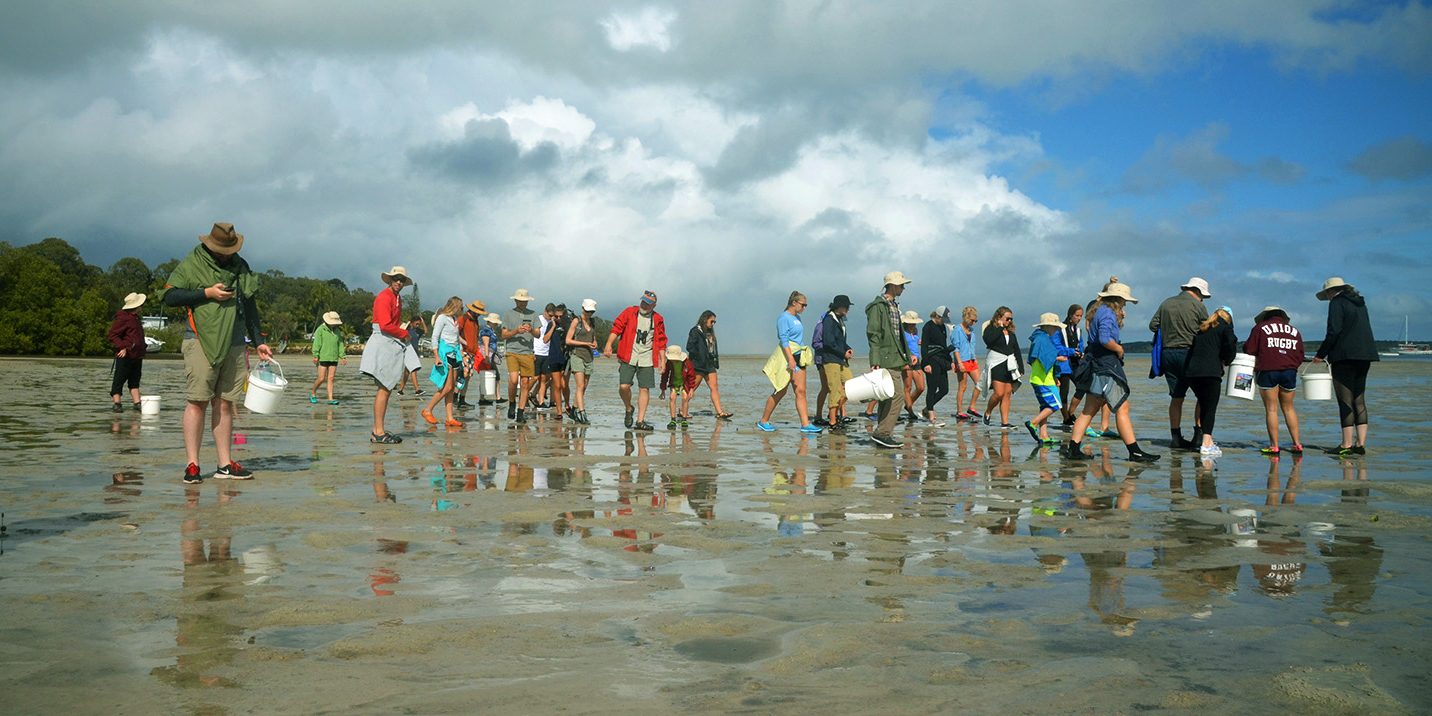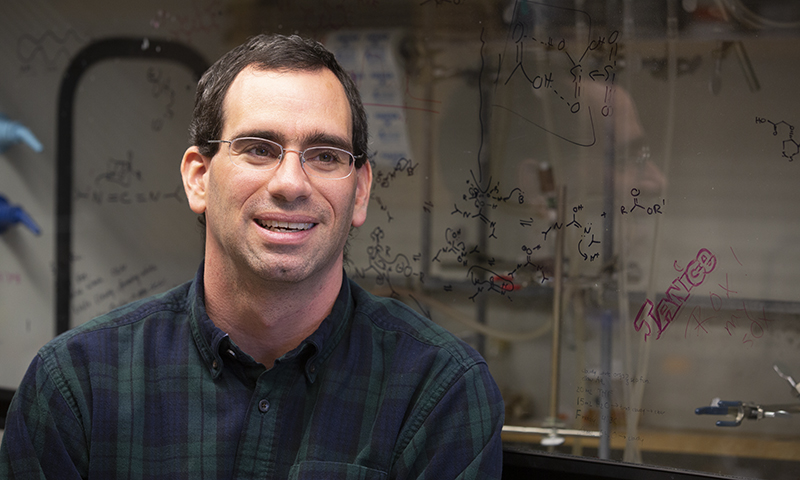
Justin Miller

Justin S MillerProfessor of Chemistry
Joined faculty in 2004
Postdoctoral, Memorial Sloan-Kettering Cancer Center
Ph.D., Massachusetts Institute of Technology
A.B., Princeton University
Contact Information
Scholarly Interest
Bioorganic and synthetic organic chemistry, particularly on the solid phase
Synthesis of bioactive cyclic depsipeptides
Synthesis of functionalized peptide acyl donors
Solid-phase resins for peptide acyl donor synthesis
Research
Current Research Students:
Sarah Lewicki '21
Lily Walker '22
Emily Rundlett '23
Research in the Miller group targets enhanced techniques for the synthesis of proteins and other peptidic molecules. The new synthetic methodology developed in the Miller laboratory is currently being used to synthesize the structurally related, depsipeptidic (at least one ester linkage), cysteine-containing, potential anticancer chemotherapeutics Spiruchostatin A, FK228, and FR 901,375, along with structural analogs of these natural products. This class of molecules exhibits anticancer activity due to histone deacetylase (HDAC) inhibition, which in turn modulates gene expression.
The synthetic methodology employed by the Miller group combines solid-phase synthesis and chemoselective ligation into a single, versatile tool. During solid-phase synthesis, chemical reactants are attached to small beads, thus making reaction products easier to handle and purify for use in subsequent reactions. Chemoselective ligation provides a means for stitching together two fragments of a molecule under mild, selective conditions. The combination of these two approaches will ultimately provide synthetic access to proteins and other compounds that were difficult or even impossible to make using older techniques.
The Miller group is also studying new solid-phase resins capable of supporting the synthesis of peptidic molecules and other materials containing at least one cysteine residue or a similar functional group. Along with the synthesis of the potential anticancer agents above, these resins will find a range of applications involving efficient synthetic routes towards other valuable, biologically relevant targets and their analogs.
Philosophy of Teaching:
My experiences as a teacher, a mentor to students in a laboratory, and a researcher have shaped my understanding of what it means to be an effective professor, both inside and outside of the classroom. My goal as a professor is to educate and inspire: to help my students become skillful, thoughtful and passionate scientists and individuals.
An educator needs to connect with students, to understand them as people and to appreciate their thought processes. An engaging, entertaining, well organized lecture can be an excellent teaching technique, in conjunction with other course components-assignments, office hours, online resources, and periodic evaluation of student progress and instructor effectiveness. I have found, however, that we need to go beyond these traditional techniques, as no single teaching style suits all students perfectly. Students take a course for a variety of reasons-it might count towards a major, it could be a pre-med requirement or a pre-requisite for another major, or it might be merely for fun. Students also approach material with different learning styles. Given this variety of perspectives, the challenge facing a professor is to make the subject relevant, interesting, and approachable for every student, so that each is able to answer the question, "What have I learned, and why is it worthwhile?" Simple chemical demonstrations-polymerization to make synthetics or plastics, or photoinduced color changes in T-shirts or sunglasses-can illuminate concepts in a meaningful, entertaining way while bridging the gap to the real world. Variable assignment formats beyond traditional exams and problem sets, including group problem sets, poster sessions, and group presentations, can also help to reach every student.
An effective educator needs not only to engage students, but to anticipate and address their difficulties. I have found supervised problem solving, in groups or individually, to be an excellent method for unearthing and addressing misconceptions. Another problem is that many students get caught up in rote memorization and lose sight of how various topics in a course relate to each other to form a coherent discipline. A course should therefore be united through underlying principle
Courses Taught
Organic Chemistry I (CHEM 240)
Organic Chemistry II (CHEM 241)
Bonding with Food: The Chemistry of Food Preparation, Production, and Policy (CHEM 304)
Courses Taught Occasionally:
Intro. General Chemistry (CHEM 110)
I Know What You Ate Last Summer (FSEM 130)
The Curious Cook (BIDS 210)
Organic Chemistry III, Advanced Organic Structure and Mechanism (CHEM 447)
Publications
(Note: HWS Undergraduate co-authors in bold)
X. Zang, L. Peraro, R. T. Davison, T. R. Blum, D. Vallabhaneni, C. E. Fennell, S. L. Cramer, H. K. Shah, D. M. Wholly, E. A. Fink, J. T. Sivak, K. M. Ingalls, C. T. Herr, V. E. Lawson, M. R. Burnett, D. J. Slade, K. E. Cole, S. A. Carle, and J. S. Miller. “Synthesis and Biological Evaluation of a Depsipeptidic HDAC Inhibitor via a Generalizable Approach Using an Optimized Latent Thioester Solid-Phase Linker.” J. Org. Chem. 2020, 85(12), 8253-8260. DOI: 10.1021/acs.joc.0c00854
D. J. Slade and J. S. Miller. “A Project Provides an Opportunity: Multiple Drafts of an Introduction Require Students to Engage Deeply with the Literature.” J. Chem. Ed. 2017, 94(10), 1458-1463.
N. A. Calandra, Y. L. Cheng, K. A. Kocak, and J. S. Miller. "Total Synthesis of Spiruchostatin A via Chemoive Macrocyclization using an Accessible Enantiomerically Pure Latent Thioester." Org. Lett. 2009, 11(9), 1971-1974.
R. J. Moreau, C. R. Schubert, K. A. Nasr, M. Torok, J. S. Miller, R. J. Kennedy, and D. S. Kemp. "Context-Independent, Temperature-Dependent Helical Propensities for Amino Acid Residues." J. Am. Chem. Soc. 2009, 131(36), 13107-13116.
V. Y. Dudkin, J. S. Miller, A. S. Dudkina, C. Antczak, D. A. Scheinberg, and S. J. Danishefsky. "Toward a Prostate Specific Antigen-Based Prostate Cancer Diagnostic Assay: Preparation of Keyhole Limpet Hemocyanin-Conjugated Normal and Transformed Prostate Specific Antigen Fragments." J. Am. Chem. Soc. 2008, 130(41), 13598-13607.
G. E. Job, R. J. Kennedy, Heitmann, B., J. S. Miller, S. M. Walker, and D. S. Kemp. "Temperature- and Length-Dependent Energetics of Formation for Polyalanine Helices in Water: Assignment of wAla(n,T) and Temperature-Dependent CD Ellipticity Standards." J. Am. Chem. Soc. 2006, 128(25), 8227-8233.
Current and Recent External Grants:
National Science Foundation #1044396, $180,000 (2011-2014): "NSF-TUES: Transforming Cell Biology and Organic Chemistry through Incorporation of the HDACi Cancer Therapeutic Laboratory Project (with Carle, Mowery, and Pelkey)
National Institute of Health Academic Research Enhancement Award (NIH-AREA) #1R15CA152869-01, $355,523 (2010-2013): "Synthesis of Anticancer HDAC Inhibitor Natural Products and Analogs"
National Science Foundation #0722178, $342,000 (2007-2010): "MRI: Acquisition of an NMR Spectrometer to Maintain Active Undergraduate Education and Research Programs" (with de Denus and Pelkey)
Research Corporation Cottrell College Science Award, $55,218 (2005-2009): "Solid-Phase Synthesis of Cyclic, Cysteine-Containing Natural Products and Analogues"
Camille and Henry Dreyfus Start-up Award, $30,000 (2004-2009): "Solid-Phase Synthesis of Peptide Bioconjugates and Peptidic Natural Products"
PROFESSIONAL AFFILIATIONS
Member, American Chemical Society (1996-present)
Member, Sigma Xi Science Research Society (2005-2009)
Reviewer, NSF (2007-present)
SERVICE PROJECTS
Communicating Chemistry: Celebrating Cuisines (creator with Gavin Sacks; organizer, with Gavin Sacks and Donnie Golden)
Cajun (2013), California (2014), Caribbean (2016), Creole (2018)
The goal of the Communicating Chemistry competitions is to challenge students to communicate fundamental concepts of chemistry through the lens of a regional cuisine. Students are instructed to form teams of up to 4 students, and to explain the chemistry behind a technique or dish important to our theme. For the competitions, these student teams submit 3-minute videos and brief written reports on their chosen topics, both of which must fit the year’s theme. Three finalist teams are selected based on the following criteria: Scientific merit; Clarity; Entertainment/fun value; Connection of theme to broader chemical topics.)
At the events, which coincide with national meetings of the American Chemical Society, the finalist teams give live, interactive presentations on their topics, as well as a display, modeled after a science fair. Judges for our competition finals have included James Beard award winners Harold McGee and Shirley Corriher, Iron Chef Contestant Chef Jason Knibb, Guy Crosby of America’s Test Kitchen, and New Orleans restauranteur Dickie Brennan.
